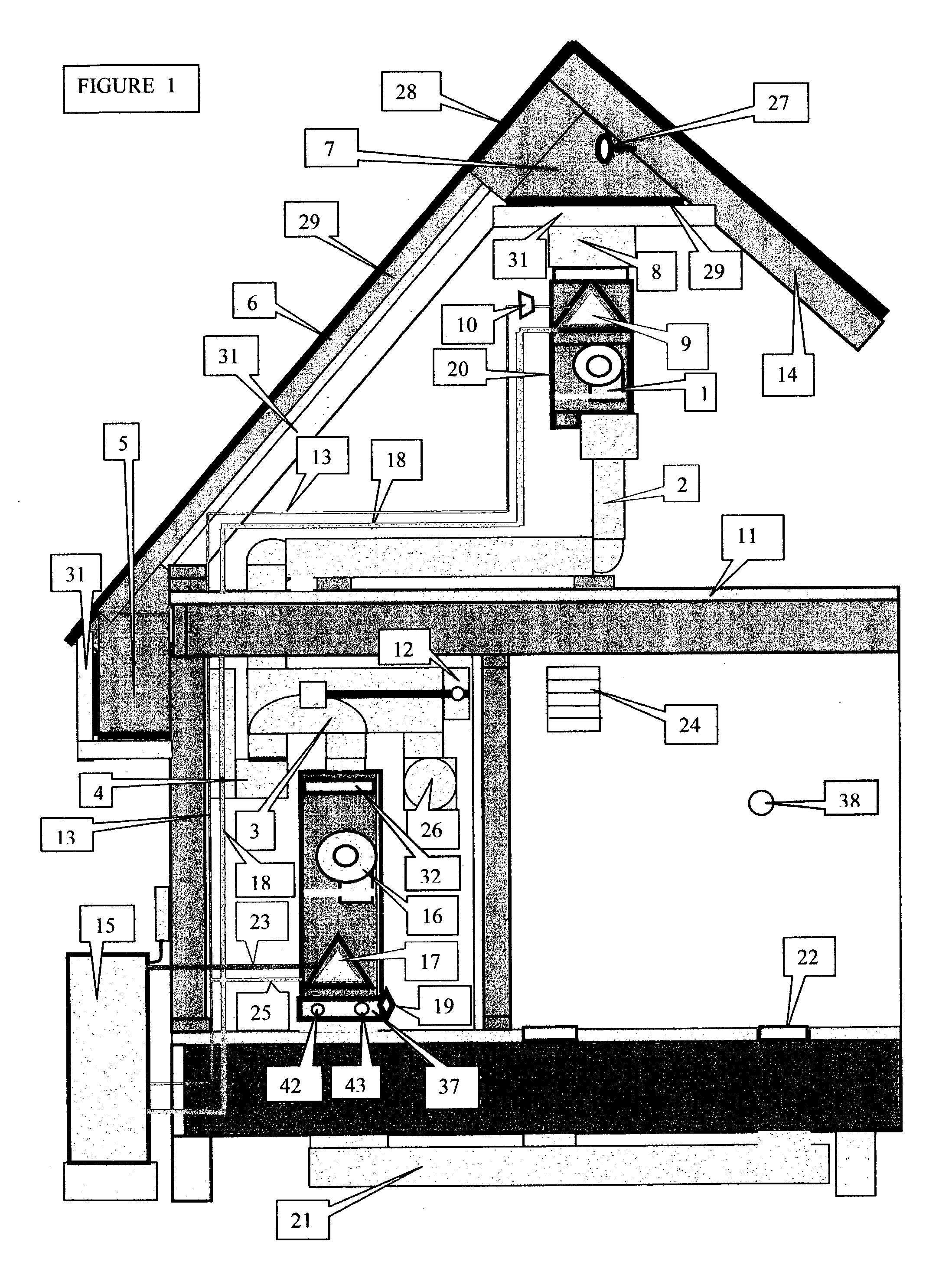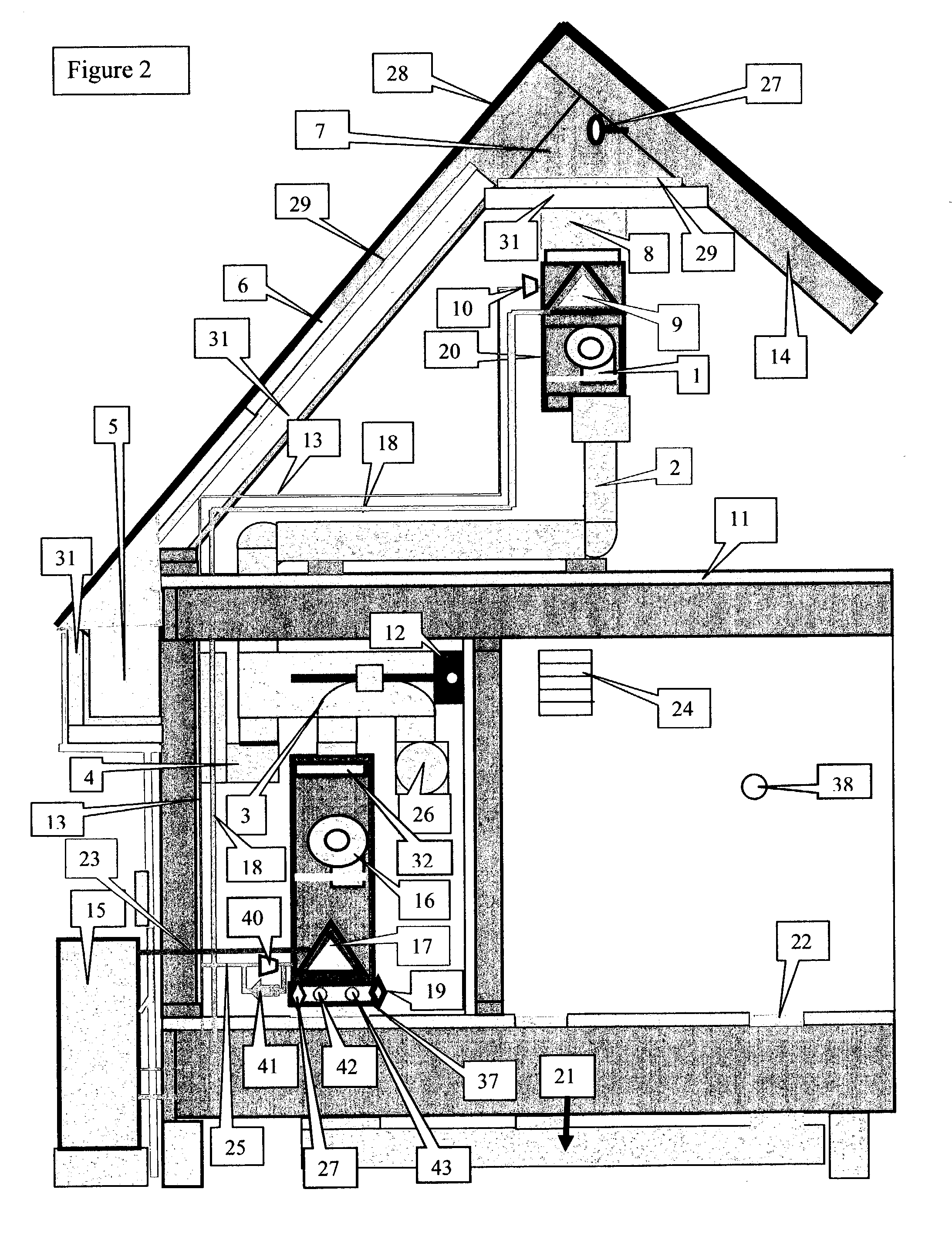Heat recovery system
- Summary
- Abstract
- Description
- Claims
- Application Information
AI Technical Summary
Benefits of technology
Problems solved by technology
Method used
Image
Examples
Embodiment Construction
[0035] FIG. 1 thermostat 38 calling for heat and attic censer 26 senses that there is adequate heat in space 7 to heat the house or building starts blower 16. for 3 minutes then blower 16 stays on by censer 19 and blows air through A coil 17 through water to air heat exchanger 37 through supply ducting system 21 through supply registers 22 through return air register 24 through return air ducting system 26 through reversing valve 3 through attic ducking 2 through attic air handler 20 through air space above the upper attic floor behind insulation 31 down through small air spaces between the rafters 6 picking up heat from roof 28 through boxed end eve through duct 4 through reversing valve 3 through filter 32 to blower 16 to be recycled.
[0036] FIG. 2 heating cycle Thermostat 38 calling for heat turns on blower 1 and blower 16. Ref. FIG. 4 thermostat turns on compressor 1, hot water isolation switch 40, reversing valve 20 and fan 35. Blower 1 blows air through attic ducting 2 through ...
PUM
 Login to View More
Login to View More Abstract
Description
Claims
Application Information
 Login to View More
Login to View More - Generate Ideas
- Intellectual Property
- Life Sciences
- Materials
- Tech Scout
- Unparalleled Data Quality
- Higher Quality Content
- 60% Fewer Hallucinations
Browse by: Latest US Patents, China's latest patents, Technical Efficacy Thesaurus, Application Domain, Technology Topic, Popular Technical Reports.
© 2025 PatSnap. All rights reserved.Legal|Privacy policy|Modern Slavery Act Transparency Statement|Sitemap|About US| Contact US: help@patsnap.com



